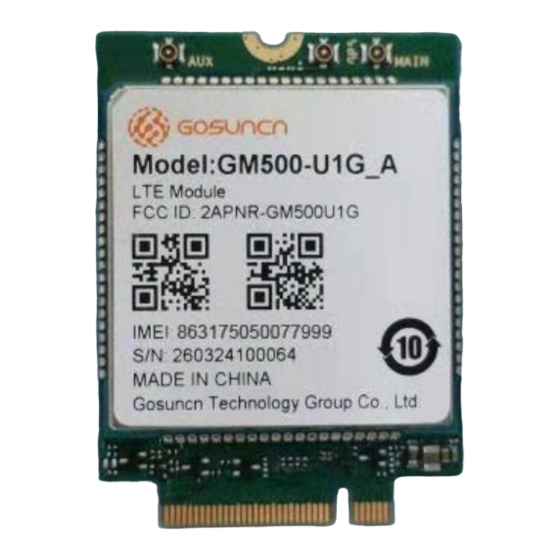
User Manuals: GOSUNCN GM500-U1G A 4G Module
Manuals and User Guides for GOSUNCN GM500-U1G A 4G Module. We have 1 GOSUNCN GM500-U1G A 4G Module manual available for free PDF download: Hardware Development Manual
GOSUNCN GM500-U1G A Hardware Development Manual (73 pages)
Brand: GOSUNCN
|
Category: Control Unit
|
Size: 3 MB
Table of Contents
Advertisement
